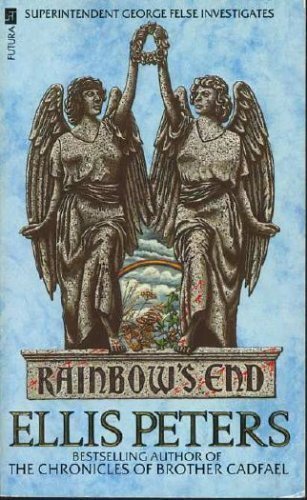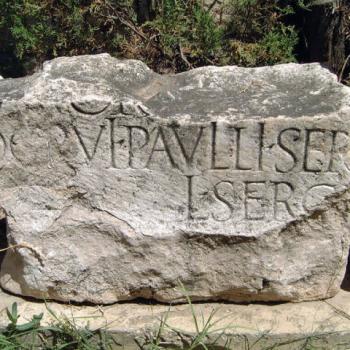By 1978, Ellis Peters was well and truly into writing her now classic series of medieval thrillers featuring Brother Cadfael. How then would she end her previous series involving the Felse family. One way to round off a series is of course to tie up all loose ends. Were that to be the case in this novel with the double entendre title (Rainbow being the name of the man murdered in this novel) we would have expected to hear about Dominic and Tossa’s marriage, and perhaps George’s retirement from the police force and his going off with Bunty to India to visit the newly weds. That is not what Peters chose to do. Instead, she chooses just the opposite, to bring in some of the characters and settings from a previous novel (The Knocker on Death’s Door), focus on a subject that she was also exploring in the Cadfael series (namely medieval manuscripts) and have George Felse solve yet another crime while in full possession of his skills and intellect. In other words, this novel is about the good British tradition of ‘carrying on’ or ‘soldiering on’ as it was sometimes called. There is one more motif in this novel that recalls the very beginning of the series— a child (this time not Dominic) using himself as possible bait to solve the mystery.
Like most of the other novels in this series, this novel is only 202 pages long, a quick and pleasant read. Once again it involves Peter’s full powers of description and persuasion, and once again it involves, if not ‘murder in the cathedral’, nevertheless murder from the top of St. Eata church. Comparisons with ‘The Knocker on Death’s Door’ are in order and apt. Bunty appears a bit more in this novel than in some, but really only very briefly. The focus is on a collection of boys who sing in the church choir, on Mr. Rainbow and his fashionable wife, who has become the organist for the choir, while remaining a full time antiques purveyor, and of course George himself. By now of course we know George rather well. Keen intellect, judicious in his use of speech when dealing with the nefarious, clever, steady, persistent, a droll sense of humor, and he always gets his man. And that is another feature of all these thirteen novels. Peters was not a writer who tried to shock or disappoint her readers by killing off beloved characters. She was a firm believer in ‘the happy ending’ or at least ‘all’s well that ends well’. Knowing this, the tension in the story becomes ‘who’ dunnit, and ‘how will it be resolved and solved’. These stories do not have the pathos of stories where great tragedy happens to the ongoing central characters. Perhaps we may attribute some of this to Edith Pargeter’s Christian faith.
I once wrote Ms. Pargeter=E. Peters and asked her why Christ did not figure a good deal more in her medieval stories. She sent me a hand-written reply about ‘our Lord’ as she called him. She was indeed a Christian. And this brings up an important point about Christian writers. As Tolkien once said, they believe in eu-catastrophe. Whatever difficulties and trials befall the believer, God can work it together for good. Now about that title, this novel is indeed about finding treasure at the end of the rainbow, in this case because of the end of Mr. Rainbow. But I’ll not say more lest I spoil the novel’s conclusion.
And so we take our leave of a very enjoyable series of novels. It makes for pleasant beach reading, and one learns a good deal about Peter’s development as a writer along the way.













